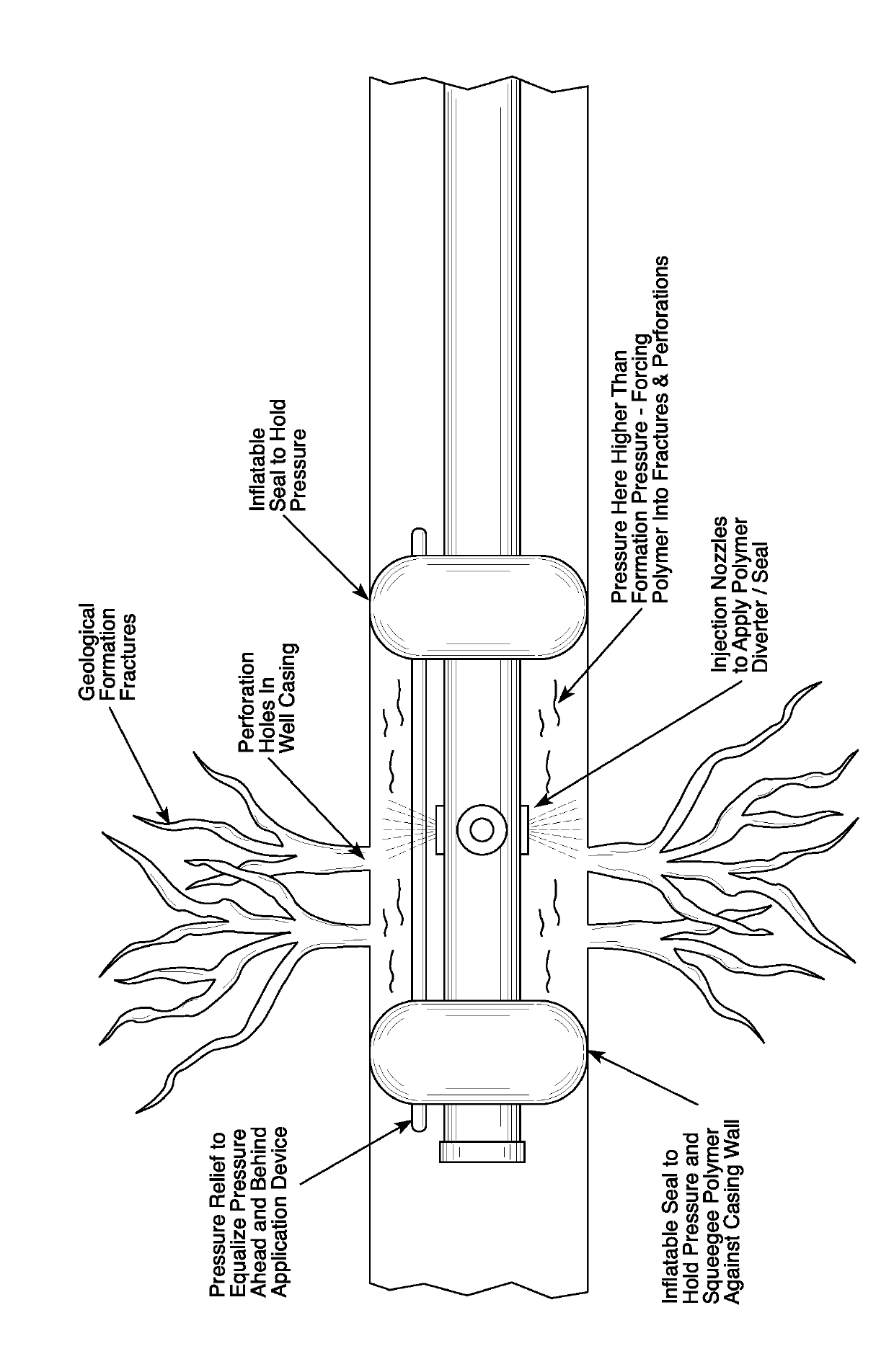Polyurethanes for water shut-off in oil and gas wells
a technology for oil and gas wells and polyurethanes, which is applied in the direction of sealing/packing, chemistry apparatuses and processes, and borehole/well accessories, etc., can solve the problems of high processing costs for separation, clarification and final disposal, and achieve the effect of reducing or preventing the ingress of formation water
- Summary
- Abstract
- Description
- Claims
- Application Information
AI Technical Summary
Benefits of technology
Problems solved by technology
Method used
Image
Examples
example 1
[0103]Mixtures of the polymeric polyols and polyisocyanates listed in Table I were prepared by pouring the designated polyol and isocyanate into a 2 oz. glass jar at a 50:50 ratio by weight. The mixtures were shaken by hand for 30 seconds and observed initially for solution quality such as clear, hazy, or the formation of micelles. Upon standing for 24 hours at ambient conditions another observation was made looking for solution clarity, haze or separation. This step was repeated after one week. The mixtures were considered miscible if the solution was initially clear and remained so even after one week. All other solution conditions were considered to be immiscible. Results are set forth in Table I.
TABLE IISOCYANATE AISOCYANATE BISOCYANATE CPOLYOL AImmiscibleImmiscibleImmisciblePOLYOL BMiscibleImmiscibleMisciblePOLYOL CMiscibleImmiscibleMiscible
example 2
[0104]Compositions 2A through 2K were prepared by mixing the components in the amounts listed in Table II (amounts are in grams). The compositions were evaluated for gel time at the temperatures listed in Table II. Gel time was determined by using a GARDCO GT-SHP “Hot Pot” Gel Timer. 100 grams of the composition was poured into an aluminum cup and placed into the “hot pot” of the gel timer that had already been stable at the cure temperature. The gel timer had a motor that rotated a stirrer that was inserted in the composition. As gelation occurred, drag eventually exceeded torque and the motor stalled. The time at which the motor stalled was the reported gel time.
TABLE II2A2B2C2D2E2F2G2H2I2J2KPOLYOL D160.00160.00160.00 160.00 160.00160.00160.00160.00160.00160.00160.00CATALYST A—————0.0040.0040.004CATALYST B——————0.44.08.0ISOCYANATE D240.00240.00240.00 240.00 240.00240.00240.00240.00240.00240.00240.00ResultsCure temperature150190200230360100150200200200200° F. (° C.)(65.6)(87.8)...
PUM
| Property | Measurement | Unit |
|---|---|---|
| viscosity | aaaaa | aaaaa |
| viscosity | aaaaa | aaaaa |
| viscosity | aaaaa | aaaaa |
Abstract
Description
Claims
Application Information
 Login to View More
Login to View More - R&D
- Intellectual Property
- Life Sciences
- Materials
- Tech Scout
- Unparalleled Data Quality
- Higher Quality Content
- 60% Fewer Hallucinations
Browse by: Latest US Patents, China's latest patents, Technical Efficacy Thesaurus, Application Domain, Technology Topic, Popular Technical Reports.
© 2025 PatSnap. All rights reserved.Legal|Privacy policy|Modern Slavery Act Transparency Statement|Sitemap|About US| Contact US: help@patsnap.com



